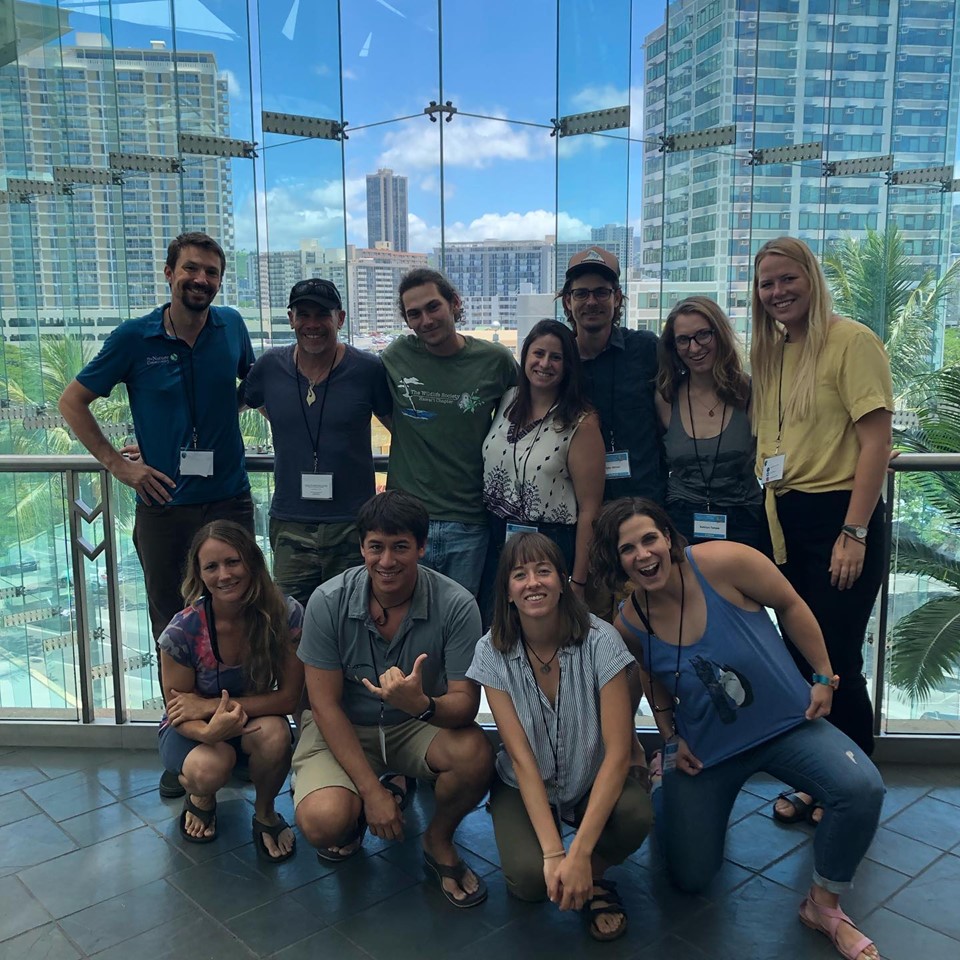2019 Conservation Conference
The theme of the 2019 Hawai’i Conservation Conference was “Resilience in the Face of Change” invoking an old Hawaiian proverb that translates to “I am a wind-resisting ‘A‘ali‘i; no gale can push me over.” Our team at the Kaua’i Forest Bird Recovery Project has certainly taken this initiative to heart. We are an organization that deals with constant change and often discouraging news. However, our strong base of support and growing knowledge allows us to bounce back stronger than ever. This year we took our new knowledge and understanding of the birds and their environment to share with other stewards of Hawaiʻi’s native ecosystems. We had four current staff members of the project attend the conference not to mention a great deal of alumni, seen in the picture above. We were able to share findings from five different research projects with colleagues from all the main islands and beyond.
Erica Gallerani presented our latest findings in using high resolution LiDAR data to predict suitable habitat for our two most endangered endemics; the ʻAkikiki and the ‘Akeke‘e. Maria Constantini shared her research on the gut microbiota of the same species and the implications of her findings on conservation work in particular the potential rerelease of captively bred birds (Click to see poster) . Abigail Kreuser, our Kupu intern, presented her independent project on small animal decay in the Alaka‘i plateau, the home of all our native birds (Click to see poster). Lainie Berry shared the beginning looks into our proposed translocation plan for the ‘Akeke‘e (Click to see poster). And finally, our partner at USFWS Mari Reeves presented the initial results from our camera trap study and her new artificial intelligence (AI) algorithm to detect rats in the pictures captured at our Mohihi site.
While it was fulfilling to share these new findings with other professionals in conservation, the representatives from KFBRP also learned a great deal and met new allies and potential sources of support and expertise. Outside of the very relevant symposium on forest birds, we attended fascinating talks including one about a new approach to planning rereleases of captively bred species. It borrows from a framework originally used for picking locations for development projects, SWOT, or strengths, weaknesses, opportunities, and threats is an approach relevant to potential future work of our organization. In addition we were able to learn about cutting edge technology in AI to recognize invasive species and diseases such as Rapid ‘Ōhi‘a Death from aerial imagery. Most importantly, we were welcomed into a community of people who traveled to Hawaiʻi’s big city carrying with them a passion for all things wild on the islands. It was an encouraging trip full of cultural and intellectual exchange. We look forward to seeing what next year’s conference will hold.


 The Guardian
The Guardian